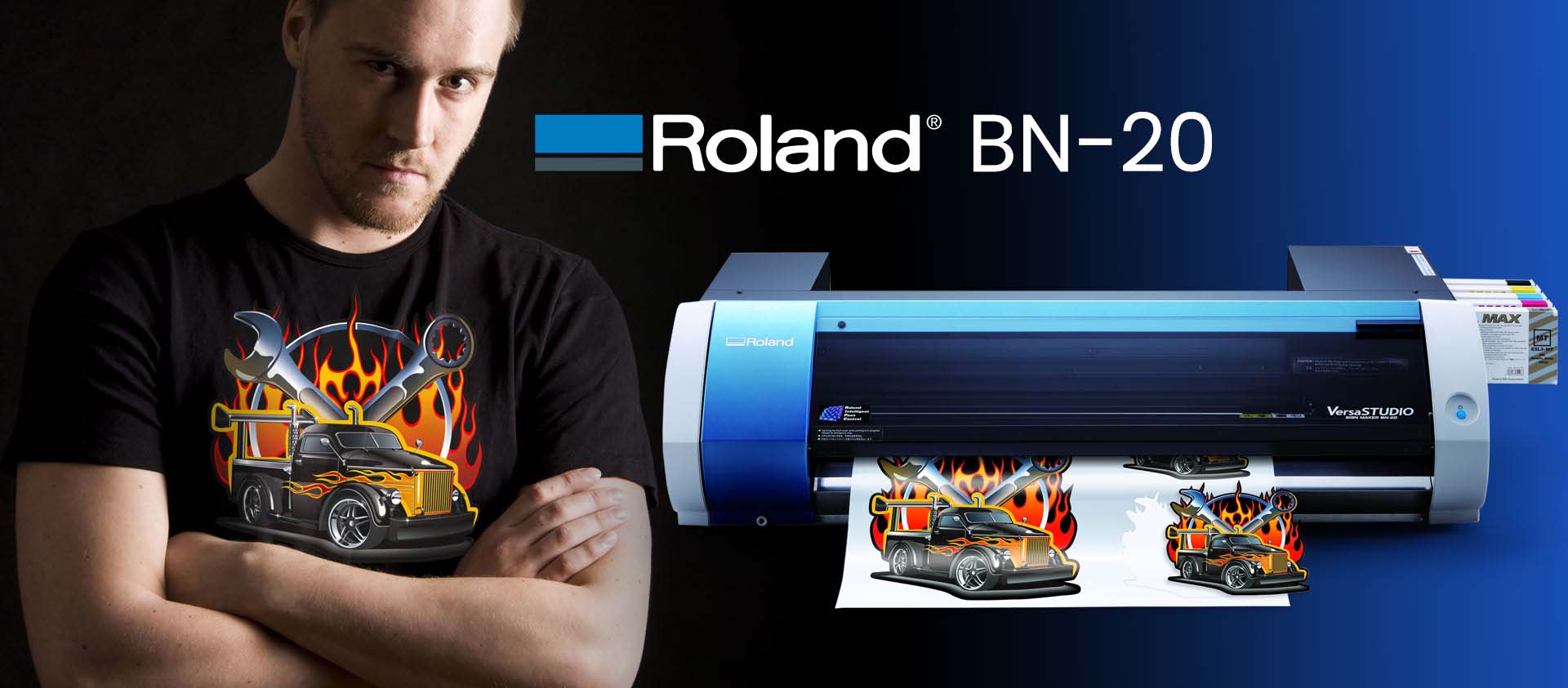DTF Printer Tips and Tricks for Best Results

As a new business owner, creating custom clothing, accessories, or other textile products with DTF printing is an impressive option.
Its very HOT right now and not only are existing businesses looking for ways to add DTF to their existing shops. But, brand new startups are jumping on bard. This relatively new technology allows for high-quality, full-color printing on a variety of fabrics, including cotton, polyester, and blends.
However, there are some tips and best practices to keep in mind when using DTF printers to ensure the best results. In this article, we’ll go over some key tips for new business owners looking to get started with a DTF Printing Machine like the Roland 20D for example..
Prepare Your Designs Properly
One of the most important steps in getting good results with DTF printing is preparing your designs properly. This includes making sure your designs are high-resolution and properly formatted for printing. It’s also important to select the right colors and to make sure your designs will look good on the fabric you’re using. Here are a few tips to keep in mind:
Use high-resolution images: When preparing your designs, make sure they’re high-resolution so that they’ll look sharp and crisp when printed. A resolution of 300 DPI (dots per inch) is typically recommended.
Ensure the Colors Look Correct
Creating a bold and colorful design can elevate any t-shirt, but what happens when the final product doesn’t match the original vision? This is where Photoshop or a similar program comes in. By proofing the colors in your design, you can ensure that the printed t-shirt looks just as vibrant as your digital mock-up. Using these programs allows you to adjust color settings, experiment with different hues, and see how your design will look in various lighting conditions.
Whether you’re designing a t-shirt for a client or creating merchandise for your business, proofing the colors is essential to delivering a high-quality product that truly captures your intended aesthetic.
Check your Artwork Format
Format your designs correctly: Before printing, make sure your designs are properly formatted for printing. This may include converting them to the correct file format (such as PNG or JPEG) and adjusting the color settings as needed.

Choose colors wisely: When selecting colors for your designs, keep in mind that some colors may not look as good on certain fabrics. For example, light colors may not show up well on dark fabrics. It’s also a good idea to avoid using too many colors, as this can make your designs look busy and cluttered.
Use the Best Inks for your DTF Printer
Once you’ve prepared your designs and selected your fabrics, it’s time to print! However, it’s important to use the right settings on your DTF printer to get the best results. Here are a few tips to keep in mind:
Follow Carefully the DTF Printer manufacturer’s instructions: Different DTF printers may have different settings and requirements, so it’s important to follow the manufacturer’s instructions especially regarding care and maintenance.
If you own a Roland BN-20D printer, it’s important to only use the designated DTF printer inks that came with it. While it might be tempting to try out other inks or save a few bucks by buying a cheaper alternative, it can potentially damage your printer and negatively impact the quality of your prints.
Roland inks are specifically formulated to work seamlessly with their printers, ensuring vibrant colors, durable prints, and long-lasting performance. By using off-brand inks, you not only risk compromising the integrity of your printer but also jeopardize the quality of your output. Don’t compromise on quality – stick with what works best for your Roland BN-20D printer.
Learn the Correct Settings for you DTF Printer
When printing a direct to film (DTF) design, there are several printer settings that you can control. This is to achieve the best results. These settings may vary depending on the specific DTF printer you’re using. But here are some typical printer settings that you can control:
- Print resolution refers to DPI, which determines the level of detail and quality of the print. Increasing DPI enhances detail but increases printing time and ink usage.
- Ink type: DTF printers use specialized inks that are designed to adhere to the film and transfer to the fabric. It’s important to choose the right type for your needs.
- Ink volume: When printing a design, you can adjust the ink volume used by the printer. This can impact both the vibrancy and saturation of colors, as well as the cost of printing. To make this adjustment, you will need to access the print optimizer software. By manipulating the ink volume setting, you can strike a balance between cost and color vibrancy.
- Color settings: Depending on the DTF printer you’re using, you may be able to adjust the color profile settings. The Roland BN 20D gives a LOT Of flexibility on this. The result is similar to adjusting the brightness, contrast, and saturation to achieve the desired result.
- Print speed: The speed at which the printer prints the design can also be adjusted. A slower print speed may result in higher quality prints, but may take longer to print. As you gain more expense, you’ll be able to balance the outcome.
- Film tension: Important to ensure that the film is properly aligned and stretched when printing. You can adjust the tension of the film in the printer.
By adjusting these printer settings appropriately, you can achieve high-quality and professional-looking DTF prints.
Finishing Your DTF Prints – Finish Presses
After printing your designs using a DTF printer, it’s important to finish them properly to ensure they look their best. Also to last as long as possible. This may include re heat-pressing your designs to set the ink, trimming the film, or removing any excess powder. Here are some tips to keep in mind:
- Heat-press your designs: To set the ink and ensure it bonds properly to the fabric, press your designs. This will help ensure your designs look vibrant and last longer.
- Trim the film carefully: Before your designs have been heat-pressed, carefully trim the film around the edges. This will help prevent any unwanted residue or buildup on your finished product. It will also prevent any ghoast images.
- DTF printing often involves the use of a special powder that helps the ink adhere to the film. After heat-pressing your designs, it’s important to remove any excess powder to ensure a clean and professional finish.
By following these tips and best practices, you can achieve high-quality and professional-looking results with DTF printing.
Constantly Improve Your DTF Printing Techniques
As with any new technology, there is always room for improvement when it comes to DTF printing. Here are a few ways you can continue to improve your DTF printing techniques and get the best possible results:
- Experiment with different fabrics: While cotton and polyester are popular choices for DTF printing, explore your options. Experiment with different fabrics to see what works best for your designs and printing process.
- Invest in high-quality equipment and supplies: The quality of your DTF prints will only be as good as the equipment and supplies you use. Invest in high-quality DTF printers, ink, and film to get the best results. We recomend the Roland BN 20D because the other printers in the product line have great results and we expect the BN 20D to do well.
- Stay up-to-date with the latest developments: DTF printing is a rapidly-evolving technology. New innovations and techniques being developed all the time. Stay up-to-date with the latest developments in the field to ensure you’re using the most effective and efficient techniques possible.
By following these tips and continuing to learn and grow your DTF printing skills, you can take your custom branding of your products to the next level.
